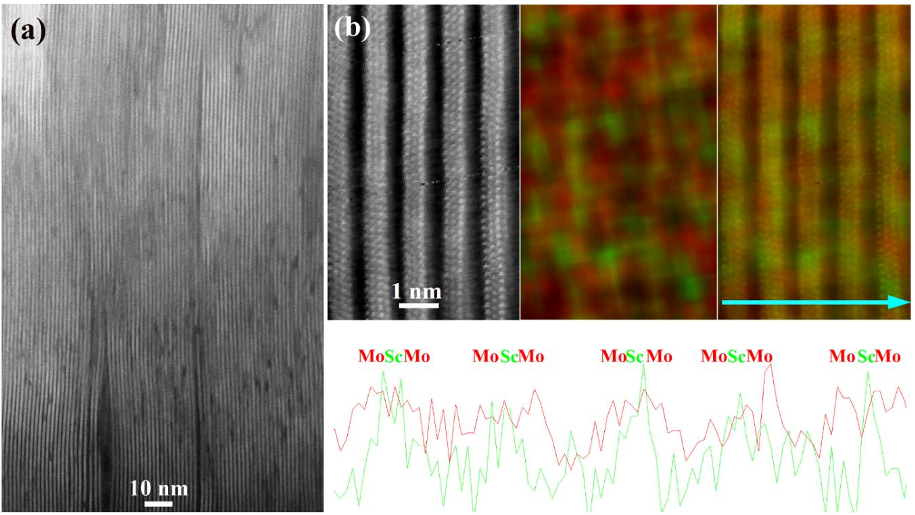Abstract: Nanolamellar transition metal carbides are gaining increasing interests because of the recent developments of their two-dimensional (2D) derivatives and promising performance for a variety of applications from energy storage, catalysis to transparent conductive coatings, and medicine. To develop more novel 2D materials, new nanolaminated structures are needed. Here we report on a tungsten-based nanolaminated ternary phase, (W,Ti)4C4- x, synthesized by an Al-catalyzed reaction of W, Ti, and C powders at 1600 °C for 4 h, under flowing argon. X-ray and neutron diffraction, along with Z-contrast scanning transmission electron microscopy, were used to determine the atomic structure, ordering, and occupancies. This phase has a layered hexagonal structure ( P63 /mmc) with lattice parameters, a = 3.00880(7) A, and c = 19.5633(6) A and a nominal chemistry of (W,Ti)4C4- x (actual chemistry, W2.1(1)Ti1.6(1)C2.6(1)). The structure is comprised of layers of pure W that are also twin planes with two adjacent atomic layers of mixed W and Ti, on either side. The use of Al as a catalyst for synthesizing otherwise difficult to make phases, could in turn lead to the discovery of a large family of nonstoichiometric ternary transition metal carbides, synthesized at relatively low temperatures and shorter times.

![Fig. 2. (a) HR(S)TEM micrograph shows the laminated structure of the MAX phase along the [112�0] zone axis. (b) The overlapping EDX elemental map for Mo, Sc and Al reveals the chemically ordered distribution of these elements within the sample.](/figures/fig-2-a-hr-s-tem-micrograph-shows-the-laminated-structure-of-fama3fnd.png)

